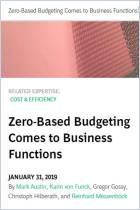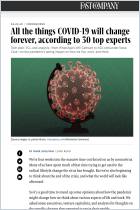Acesse a sua conta getAbstract para obter o resumo!

Acesse a sua conta getAbstract para obter o resumo!
Karin von Funck, Mark Austin, Donat Wunderlich and Christina Schenk
To Make Zero-Based Budgeting Work, Change Behavior
Boston Consulting Group, 2021
Sobre o que é?
Do recent upheavals present an opportunity for your company to implement zero-based budgeting?
Recommendation
Where are your resources going, and does spending support your company’s most important priorities? If you were able to free up some funds, what new projects or technologies could you invest in? How can you make all employees committed to cost-saving measures and more accountable for budgeting decisions? These are some of the questions that companies can answer using ZBB, or zero-based budgeting. In this special report, the Boston Consulting Group provides a guide for implementing ZBB.
Summary
About the Authors
Karin von Funck, Mark Austin, Donat Wunderlich and Christina Schenk are professionals with the Boston Consulting Group.





















Comment on this summary